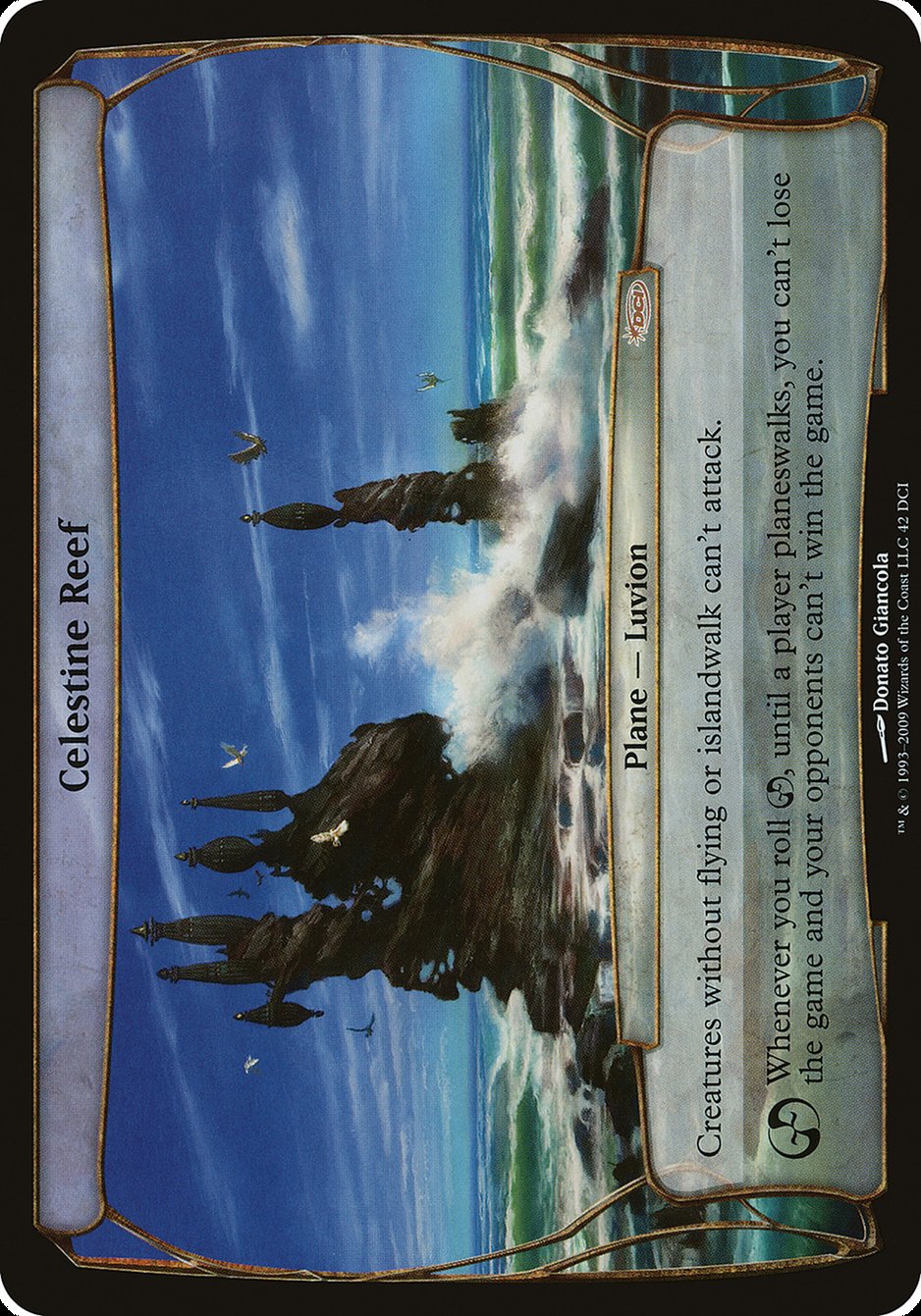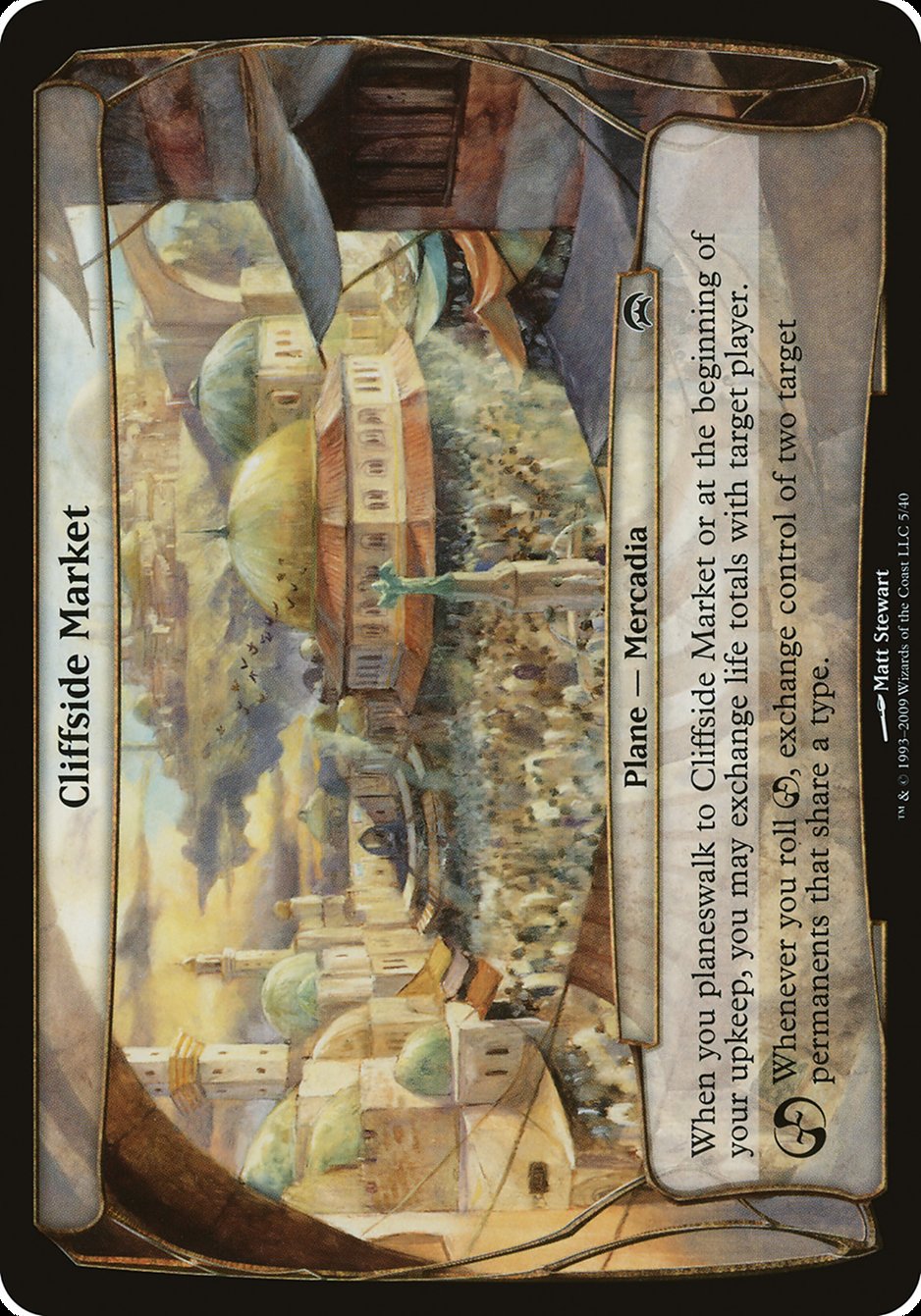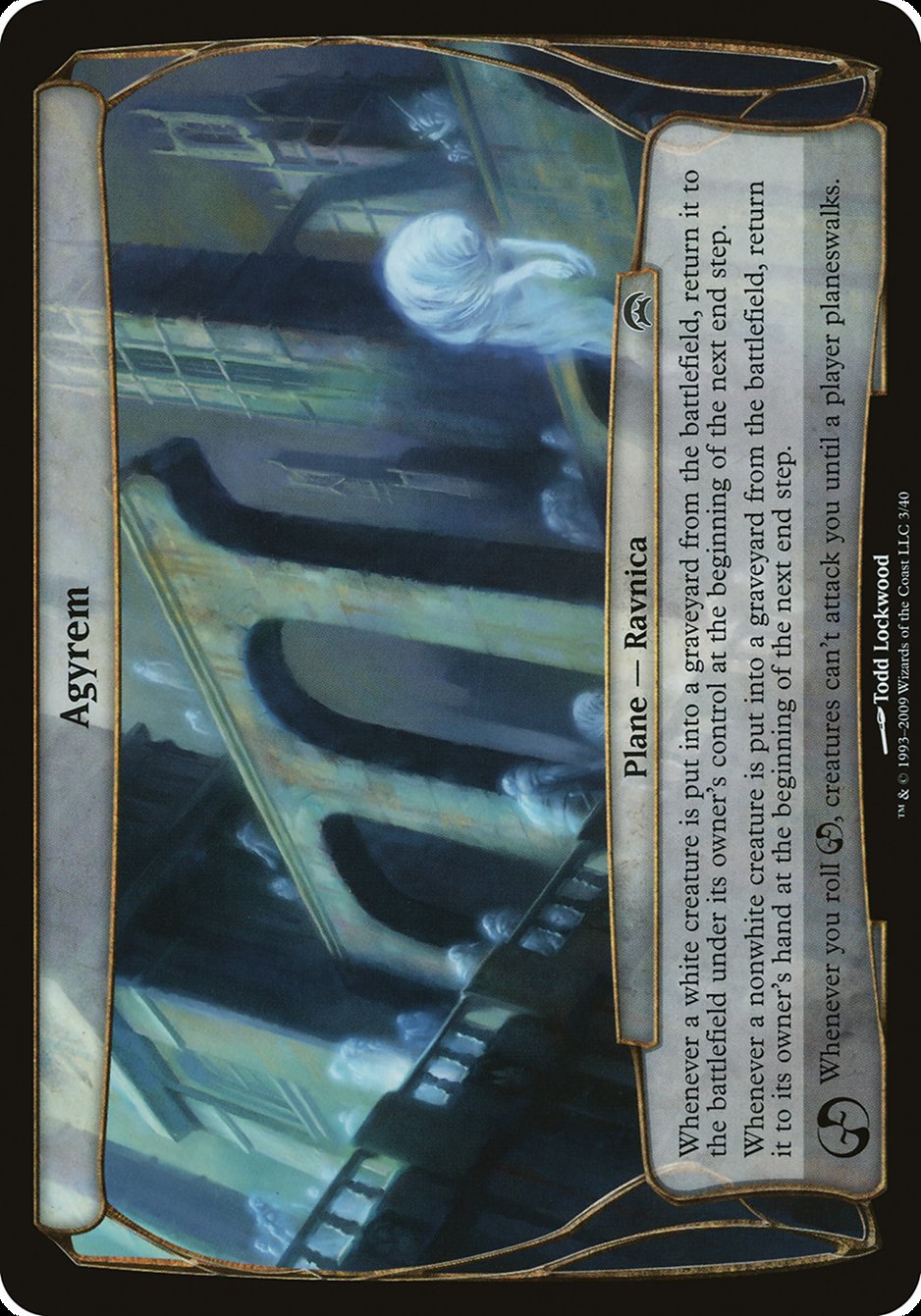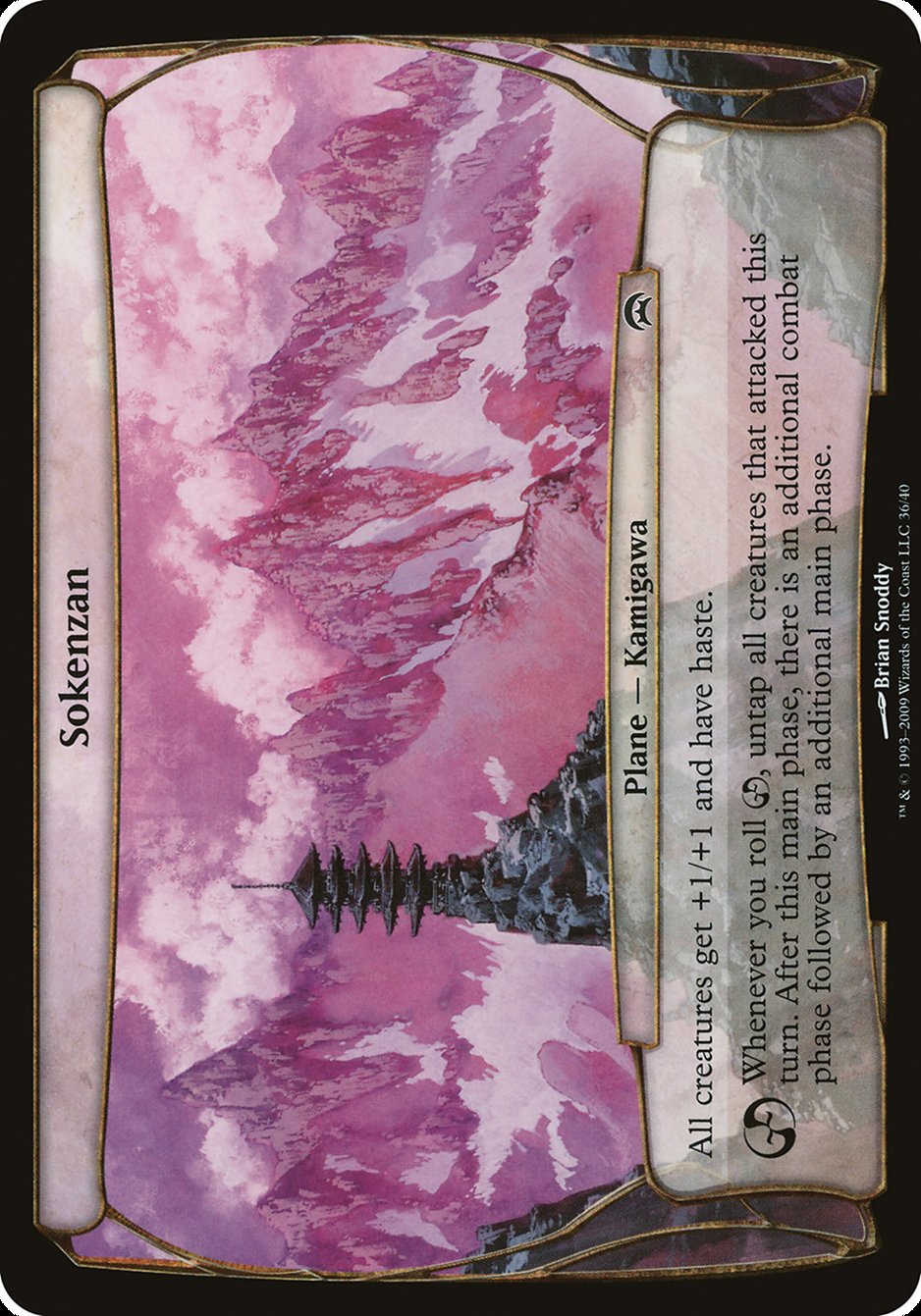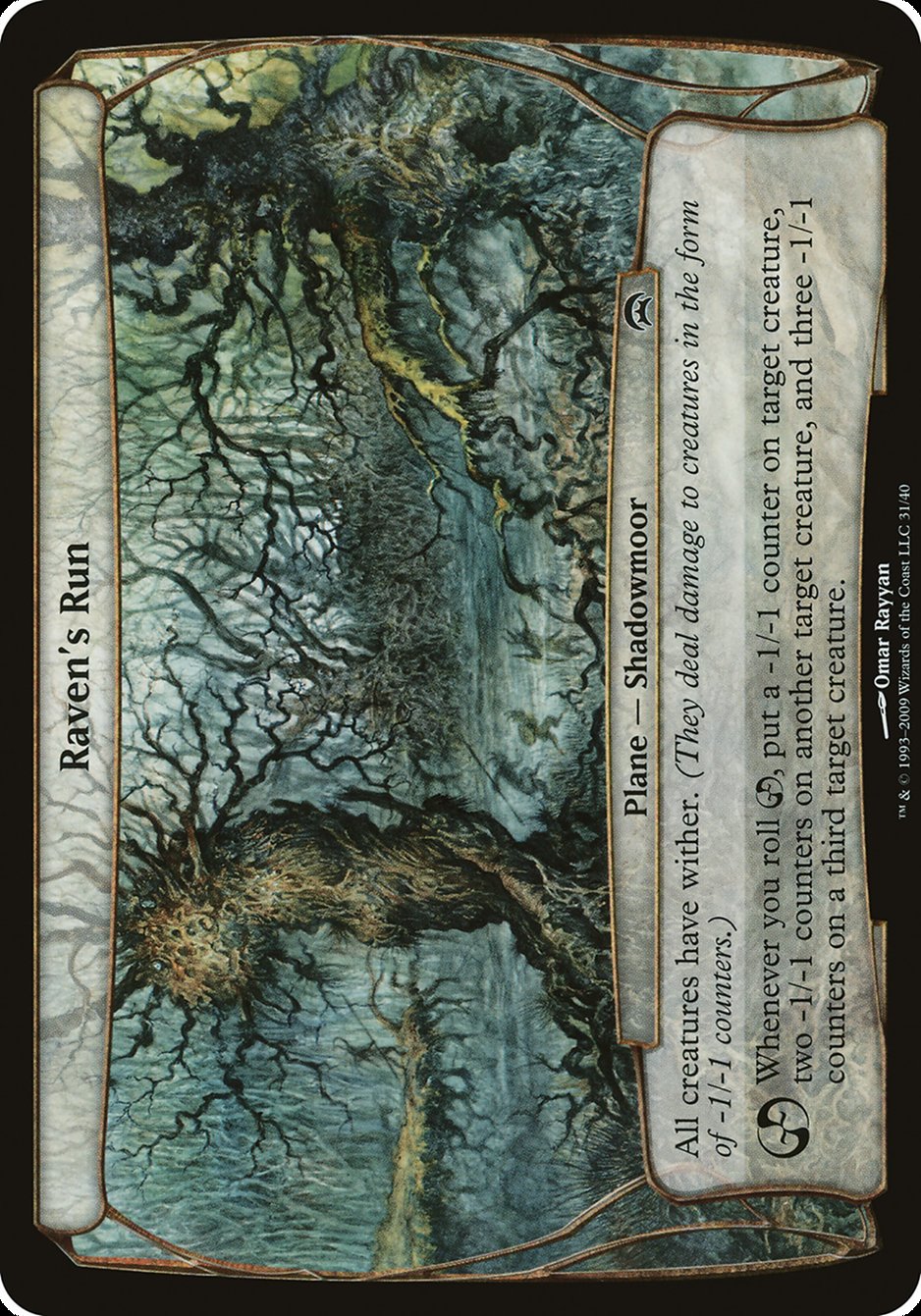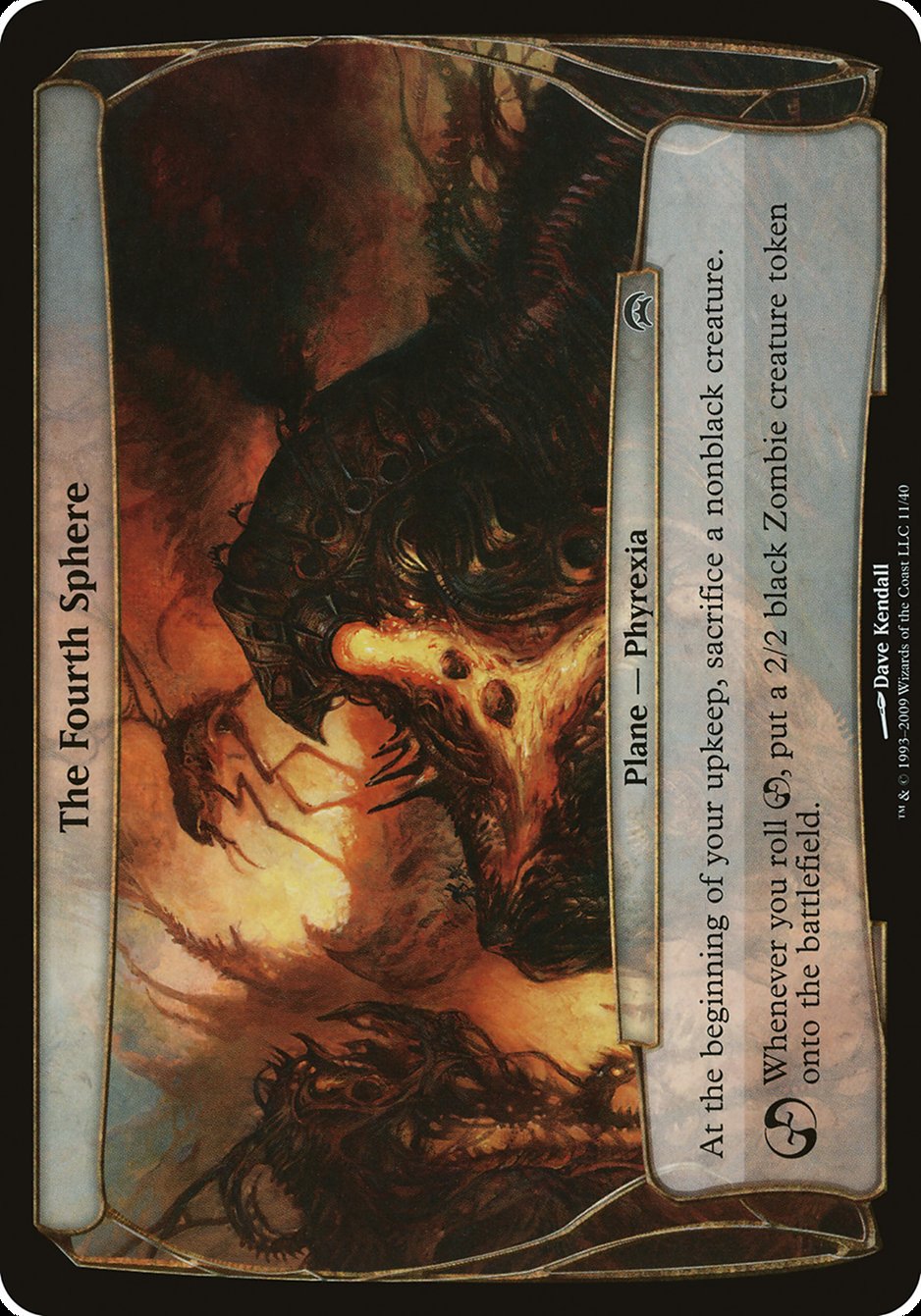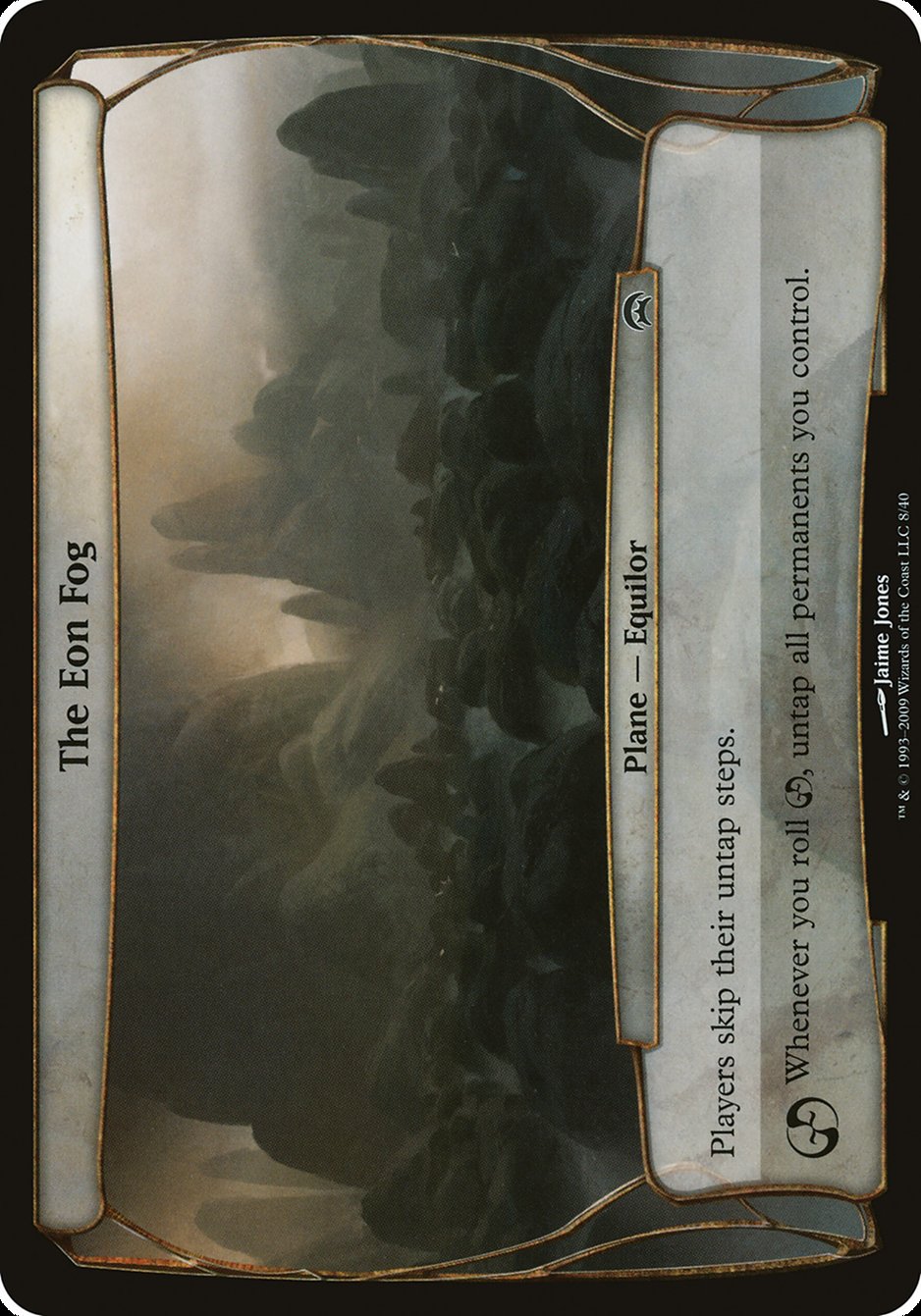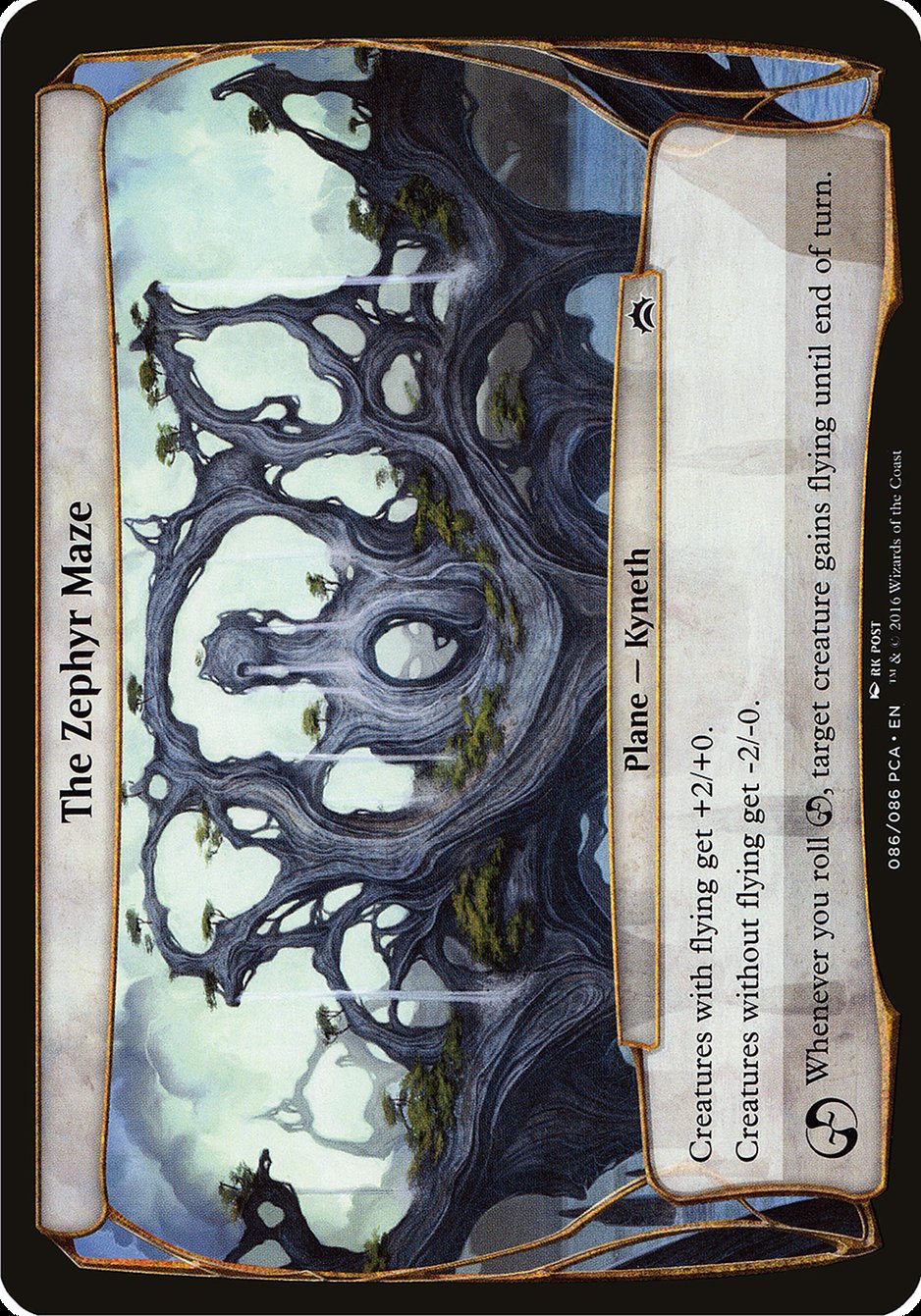Otaria Carta MTG
| Colecciones da carta | Lanzado en 2 coleccionesVer todos |
| Rareza | Común |
| Tipo | Plano — Dominaria |
Texto de la carta
Las cartas de instantáneo y conjuro en los cementerios tienen la habilidad de retrospectiva. El coste de retrospectiva es igual al coste de maná de la carta. (Su propietario puede lanzar la carta desde su cementerio por su coste de maná. Luego la exilia.) Siempre que lances caos, toma un turno extra después de éste.
Cartas Similares
Otaria es una carta de tierra única en Magic: The Gathering, comparable a otras cartas en la categoría de tierra que se centran en el control o la ventaja de maná. Es similar a las tierras de rebote del bloque de Ravnica, como Azorius Chancery, que devuelven una tierra a la mano del dueño al entrar mientras proporcionan dos colores de maná. Otaria, aunque no proporciona maná de varios colores, comparte el concepto de devolución de tierras que brinda flexibilidad estratégica al jugador.
Otra carta que hace eco de la estrategia de manipulación de tierras de Otaria es Ghost Town. Ghost Town permite al jugador devolverla a su mano durante el turno de un oponente, asegurando caídas de tierra y evitando jugadas perdidas. Otaria no tiene esta capacidad activada pero sigue ofreciendo mecánicas de juego valiosas. Luego consideramos Terrain Generator, que permite a los jugadores colocar tierras directamente en el campo de batalla. Esto se asemeja al potencial de utilidad de tierras de Otaria pero no requiere que la carta regrese a tu mano primero.
Al evaluar Otaria junto con cartas de tierra comparables, su singularidad en MTG se hace evidente. Puede que no genere maná como las tierras de rebote o tenga la capacidad activa de regreso de Ghost Town, pero se destaca con sus propios usos estratégicos, sumando a la diversa variedad de cartas de tierra disponibles para los jugadores.
Cartas similares a Otaria por color, tipo y coste de maná
Aspectos Positivos de la Carta
Ventaja de Cartas: La carta Otaria brilla al ofrecer a los jugadores más poder de robo, permitiéndote acceder más rápido a tu mazo. La capacidad de ver más cartas puede ser una ventaja crucial, dándote las herramientas necesarias para superar a tus oponentes.
Aceleración de Recursos: Otaria puede ser instrumental para aumentar tus recursos. Al desactivar tierras o recursos potencialmente, te otorga la capacidad de jugar cartas de mayor costo antes de lo previsto o de utilizar múltiples estrategias en el mismo turno.
Velocidad Instantánea: La flexibilidad de hechizos a velocidad instantánea como Otaria mejora tu juego al permitirte una profundidad estratégica. Lánzalo al final del turno de un oponente para maximizar la eficiencia o como una jugada inesperada para interrumpir sus planes, manteniéndolos alerta y tú en control.
Aspectos Negativos de la Carta
Requerimiento de Descarte: Las cartas de Otaria a menudo requieren que un jugador descarte otra carta de su mano, lo cual puede potencialmente agotar recursos valiosos o obstaculizar el plan estratégico al enfrentar a un oponente con un estilo de juego más conservador.
Costo Específico de Mana: Las cartas del set de Otaria tienden a tener costos de mana específicos para determinados colores o combinaciones, lo que las hace menos flexibles y potencialmente difíciles de jugar en mazos multicolor o con restricciones de color.
Costo de Mana Comparativamente Alto: Muchas cartas de Otaria tienen un costo de mana alto en comparación con efectos similares ofrecidos por cartas de otros sets. Esta característica puede retrasar la ejecución de tu estrategia de juego y también puede dejarte en desventaja contra oponentes que utilicen cartas más eficientes en mana.
Razones para Incluir Otaria en tu Colección
Versatilidad: Otaria es una carta que puede adaptarse fácilmente a diversas estrategias de mazo, sirviendo como una pieza valiosa en diferentes estilos de juego. Su capacidad para encajar flexible en numerosos arquetipos la convierte en un elemento indispensable para cualquier coleccionista que busque optimizar la construcción de su mazo.
Potencial de Combo: Los mecánicas únicas de Otaria le permiten sinergizarse con otras cartas para combinaciones poderosas. Su potencial para desbloquear nuevas oportunidades de combo o mejorar las existentes la convierte en una pieza clave dentro de cualquier kit estratégico.
Relevancia en el Meta: Dada la cambiante dinámica del meta del juego, las atributos de Otaria pueden alinearse bien con tipos de mazo prevalentes. Su utilidad puede ser particularmente alta en entornos donde sus sinergias e interacciones pueden ser aprovechadas al máximo, mejorando tu ventaja competitiva.
Cómo Vencer
La carta de MTG Otaria puede parecer desafiante de abordar en el campo de batalla, siendo una fuerza poderosa en el terreno, pero existen estrategias para contrarrestarla efectivamente. Como con cualquier carta fuerte, el conocimiento de sus fortalezas y debilidades es clave para vencerla. En el caso de Otaria, los hechizos o habilidades de eliminación de artefactos pueden cambiar el rumbo, despojando a la carta de sus fuentes de poder. La interrupción de encantamientos también funciona bien, ya que Otaria puede ser fortalecida por varios encantamientos.
Ajustar tu juego para centrarte en hechizos de eliminación directa también puede ser efectivo, ya que pueden evadir medidas defensivas que suelen proteger una carta como Otaria. Además, puedes aprovechar situaciones en las que Otaria no tenga mana disponible para una jugada agresiva o utilizar limpiezas de tablero para restablecer el campo si el equilibrio se inclina en tu contra. Recuerda, una interrupción oportuna combinada con un ataque estratégico puede desmantelar incluso el plan del oponente más fortificado, y Otaria no es una excepción a esta regla.
Vale la pena tener en cuenta que adaptar tu mazo con contramedidas consideradas efectivas contra Otaria de antemano siempre te dará la ventaja. La preparación, como siempre, es clave en el mundo dinámico de Magic: The Gathering.
Donde comprar
Si estás buscando comprar una carta MTG Otaria de un coleccione específico como Planechase Planes and Planechase Anthology Planes, existen varias opciones confiables que debes considerar. Una de las fuentes principales es tu tienda de juegos local, donde a menudo puedes encontrar paquetes de refuerzo, cartas individuales y mazos preconstruidos de colecciones actuales y pasadas. A menudo ofrecen el beneficio adicional de una comunidad donde puedes intercambiar con otros jugadores.
Para un inventario más amplio, particularmente de colecciones más antiguos, mercados en línea como TCGPlayer, Card Kingdom y Card Market ofrecen amplias selecciones y te permiten buscar cartas de colecciones específicos. Las plataformas de comercio electrónico más grandes como eBay y Amazon también tienen listados de varios vendedores, lo que puede ser un buen lugar para buscar productos sellados y hallazgos raros.
Además, el sitio oficial de Magic suele tener un localizador de tiendas y listas de minoristas para encontrar Wizards of the Productos con licencia costera. Recuerde comprobar la autenticidad y el estado de las cartas al comprarlas, especialmente a vendedores individuales en mercados más grandes.
A continuación se muestra una lista de algunos sitios web de tiendas donde puede comprar las Otaria y otras cartas MTG:
 COMPRAR
COMPRAR BurnMana es un socio oficial de TCGPlayer
- eBay
- Card Kingdom
- Card Market
- Star City Games
- CoolStuffInc
- MTG Mint Card
- Hareruya
- Troll and Toad
- ABU Games
- Card Hoarder Magic Online
- MTGO Traders Magic Online
Ver productos MTG
Impresiones
La carta Otaria Magic the Gathering se lanzó en 2 colecciones diferentes entre 2009-09-04 y 2018-12-25. Ilustrado por Charles Urbach.
| # | Liberado | Nombre | Código | Símbolo | Número | Marco | Disposición | Borde | Artista |
|---|---|---|---|---|---|---|---|---|---|
| 1 | 2009-09-04 | Planechase Planes | OHOP | 28 | 2003 | Planar | Negra | Charles Urbach | |
| 2 | 2018-12-25 | Planechase Anthology Planes | OPCA | 61 | 2015 | Planar | Negra | Charles Urbach |
Reglas e información
La guía de referencia para las reglas de las cartas Otaria de Magic: The Gathering proporciona las reglas oficiales, las erratas emitidas, así como un registro de todas las modificaciones funcionales que se han producido.
| Fecha | Texto |
|---|---|
| 01/10/2009 | Una carta de plano boca arriba que se voltea boca abajo se convierte en un nuevo objeto sin relación con su existencia anterior. En particular, pierde todos los contadores que pudiera haber tenido. |
| 01/10/2009 | Una carta de plano se trata como si su cuadro de texto incluyera "Cuando gires {PW}, pon esta carta en la parte inferior del mazo de planos de su propietario boca abajo, luego mueve la carta superior de tu mazo de planos fuera de ese mazo de planos y dale la vuelta." Esto se llama la "habilidad de caminar entre planos." |
| 01/10/2009 | Cuando una carta con destello se resuelve, nunca va al cementerio de su propietario, por lo que las habilidades que se activan al poner cartas en un cementerio no se activarán. En su lugar, la carta es desterrada. |
| 01/10/2009 | Si un hechizo lanzado usando la habilidad de recuerdo es contrarrestado, todavía es desterrado en lugar de ser puesto en el cementerio de su dueño. |
| 01/10/2009 | Si una habilidad de un plano se refiere a "tú", se está refiriendo a quien sea el controlador del plano en ese momento, no al jugador que comenzó el juego con esa carta de plano en su mazo. Muchas habilidades de las cartas de plano afectan a todos los jugadores, mientras que muchas otras afectan solo al controlador del plano, así que lee cada habilidad con cuidado. |
| 01/10/2009 | Si lanzas una carta utilizando flashback, lanzas esa carta desde tu cementerio en lugar de tu mano, y pagas un costo alternativo en lugar de su costo de maná, pero todo lo demás sobre lanzar ese hechizo funciona normalmente. Debes seguir las restricciones de tiempo basadas en el tipo de carta (si es un conjuro), así como otras restricciones (como "Lanzar -sta carta] solo antes de que se declaren los bloqueadores"). Puedes pagar costos adicionales (como kicker). Los efectos que te obligan a pagar más o menos por un hechizo se aplicarán. |
| 01/10/2009 | Si sacas {CHAOS} varias veces en el mismo turno, tomarás esa cantidad de turnos extra después de este. |
| 01/10/2009 | Si utilizas la habilidad flashback de una carta, realmente estás lanzando esa carta. Se mueve desde tu cementerio a la pila. Las habilidades que se activan cuando lanzas un hechizo se activarán. Ese hechizo puede ser contrarrestado. |
| 01/10/2009 | Si usas la habilidad de recuerdo concedida por Otaria para lanzar una carta con X en su coste de maná desde tu cementerio, escoges el valor de X al lanzarla. Aún así, tendrás que pagar ese X. |
| 01/10/2009 | Si utilizas la habilidad de destello otorgada por Otaria para lanzar una carta dividida desde tu cementerio, el coste de destello que pagas es igual al coste de maná de la mitad que estás lanzando. |
| 01/10/2009 | Otaría puede hacer que una carta de instantáneo o conjuro en un cementerio tenga múltiples habilidades de flashback. Su propietario puede lanzarla utilizando cualquiera de esas habilidades. |
| 01/10/2009 | El controlador de una carta de plano boca arriba es el jugador designado como el "controlador planar". Normalmente, el controlador planar es quienquiera que sea el jugador activo. Sin embargo, si el controlador planar actual abanadonara el juego, en su lugar el próximo jugador en el orden de turno que no abandone el juego se convierte en el controlador planar, luego el antiguo controlador planar abandona el juego. El nuevo controlador planar conserva esa designación hasta que abandone el juego o un jugador diferente se convierta en el jugador activo, lo que suceda primero. |





